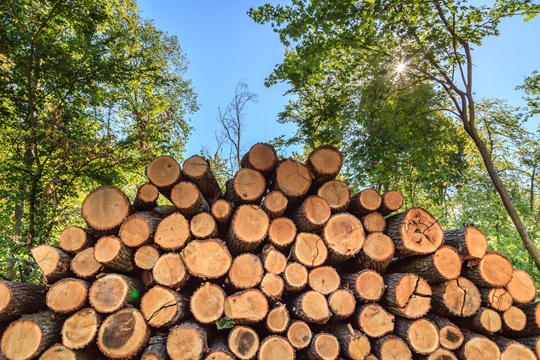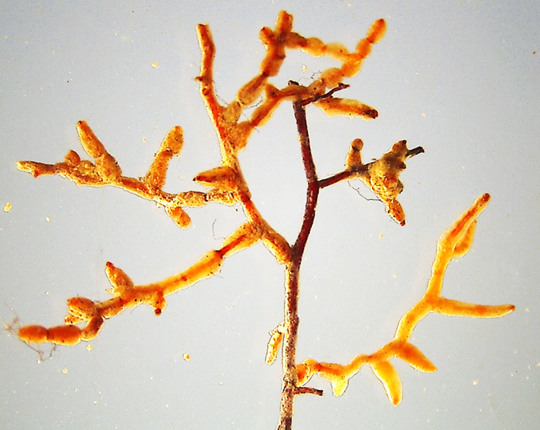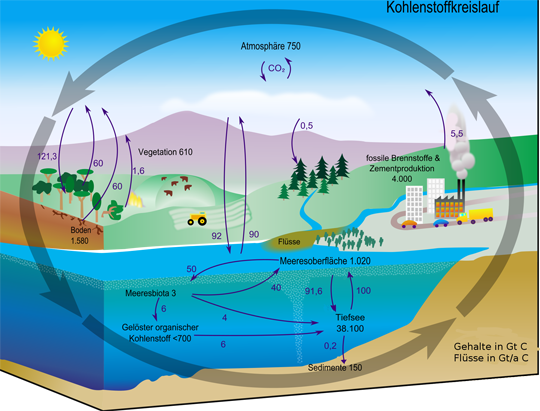From Fine Root to Footprint
Freiburg, Dec 10, 2019
Improving carbon storage, closing carbon cycles, and preventing emissions: Dr. Friderike Beyer, junior professor Dr. Sina Leipold, and Dr. Janine Schweier are studying three different approaches to carbon management at the Faculty of Environment and Natural Resources. The trio of early-career researchers is focusing on different points in the carbon cycle in an effort to grasp how our society can use natural resources in a more intelligent way, reduce emissions, and enable a better storage of carbon through a well-thought-out forest management strategy.

At the University of Freiburg, researchers are looking for ways to fell and transport trees as reliably and efficiently and with as low an environmental impact as possible. Photo: Lilli_stock.adobe.com
“Carbon cycle” is a comparatively recent term for an age-old phenomenon. Up until the Industrial Revolution, the carbon cycle was largely closed and intact. But with the beginning use of fossil fuels in the industrial age, large amounts of the greenhouse gas carbon dioxide were released into the atmosphere – with the familiar consequences: global warming and climate change. One of the aims of the bio-economy is to curb the release of carbon dioxide into the atmosphere by sequestering carbon in biomass and in the ground and by promoting sustainable production.
This is also the aim of three early-career researchers at the University of Freiburg’s Faculty of Environment and Natural Resources. It’s no accident that forestry policy researchers are devoting their efforts to this issue. “The idea of sustainability brought to bear in the bio-economy has its origins in forest science,” explains Friderike Beyer. Supported by funding from the Margarete von Wrangell Program, she has spent the last year studying how much carbon various tree species release into the soil and sequester through the activity of their fine roots. Fine roots are roots with a diameter of less than two millimeters. A considerable portion of the carbon captured by trees during photosynthesis is used directly for fine root growth. At the same time, Beyer is also studying the carbon dynamics in forest monocultures in comparison to that in mixed woodlands with a particular selection of tree species. Her research is effectively a contribution to fundamental research on the issue of how to increase the potential of forests as carbon sinks: the potential for storing as much carbon as possible in the ecosystem.
“We three are working together in a kind of cycle. When you’re finished with the roots and the population development,” says Janine Schweier to Beyer, “I come and consider how I can get the timber to the consumer and industry in a sustainable way: How can trees be felled and transported as reliably and efficiently and with as low an environmental impact as possible?” Turning to junior professor Sina Leipold, she then adds: “Then you take over and study how the harvested timber can be used in an environmentally friendly and efficient way and what political instruments are necessary to achieve this.”

Tiny but very important fine roots: Studies aim to show how much carbon various tree species release into the soil and sequester through the activity of their fine roots. Photo: Janna Wambsganß
Concepts for Future Timber Utilization
Schweier, who is also receiving funding from the Margarete von Wrangell Program, is working on methods for reducing emissions in the area of timber harvesting and transport and is developing concepts for future timber utilization and supply. Finally, Leipold’s work involves finding sustainable business models and practices and determining how they can be promoted at the political level. She and her group then use these findings to formulate recommendations for policymakers and businesses: Leipold heads the junior research group “Circulus – Opportunities and Challenges of Transition to a Sustainable Circular Bio-Economy” with funding from the German Federal Ministry of Education and Research.
Of the three scientists, Beyer is the one who works closest to nature: “For my studies, I take fine root samples from the soil on the test site with a soil sample ring and analyze them. I take a look at the proportion of fine root biomass of the tree species in question and make a projection.” Since up to two-thirds of the carbon in forests is sequestered underground in the forest soil, the estimation of fine-root turnover is of fundamental importance.
Worldwide Studies
Another important factor in the long-term storage of carbon is how resistant the tree species are to various diseases and pests – such as bark beetles – and their resilience against environmental conditions such as increasing drought or severe storms. One-fourth of the accumulated wood per year is lost to bark beetle infestations and storm damage. “I work for the world’s largest tree diversity project, the Tree Diversity Network, TreeDivNet for short. Studies similar to ours are also being conducted in countries like Canada, China, and the USA,” says Beyer.
Schweier’s field of activity is just as diverse: “My task is to work out concepts that make processes of timber supply and transport as efficient, profitable, and socially acceptable as possible but also low in emissions and environmentally friendly.” Her research is located at the interface between forest science and the environmental sciences, from which she adopts individual instruments. The new thing about her analyses is that, over and above the administrative factors, technical guidelines, and economic aspects, they also consider environmental and social indicators.

The carbon cycle: The numbers in black indicate how many billion tons of carbon are available in the various reservoirs. The numbers in blue show how much carbon is exchanged between the individual sinks per year. Photo: Wikimedia Commons
Efficiency and Resource Conservation
For example, the Freiburg researcher studies the relationship between economy and ecology as a basis for developing concepts on the supply of timber. The constructive way of going about this is to find a balance, because purely ecologically minded and thus usually costly concepts will not gain acceptance in industry. “It’s a matter of optimized processes that should simultaneously take into account resource conservation and efficiency.” Another important aspect of her work is to always factor in societal acceptance, even if it sometimes lags behind technical developments: “There’s a study in which a photo of a large harvesting machine in the forest met with disapproval among 50 percent of respondents whereas a photo of a horse pulling logs met with approval – even though the use of harvesting machines is not just more efficient and rational but less dangerous for loggers and also makes sense from an ecological standpoint.” At the same time, Schweier has to take into account the legitimate interests of loggers. “Cable winches, for instance, which are used for timber harvesting, can weigh 50 kilograms. Carrying them around the whole day is an enormous physical strain.” In addition, the researcher needs to consider the aesthetics of the forest and its recreational potential in her work.
Placing Hopes in Political Movements
Leipold, too, has to keep in mind the practicability of bio-economic concepts. A large part of her work consists in communicating her suggestions for solutions to representatives from civil society, industry, and politics. For instance, the federally funded research group she is heading investigates the consumption of resources during the manufacture of products and calculates ecological footprints. They can serve as a basis for determining the environmental impact of timber that is, for instance, transported from Indonesia to Germany to be processed further here and exported again. The results then show where there is potential for optimization. “An example of this is so-called cascade utilization. It can mean that timber is used initially as construction material, serves later as material for furniture, and then ends up being used to produce energy through combustion,” explains Leipold.
Concepts for the bio-economy are increasingly being taken into account in European and German politics, “but there are divergent opinions as to how a sustainable bio-economy can be reached,” says Leipold. One important lever governments can use to steer the economy toward a sustainable bio-economy she mentions – thus touching on a goal all three Freiburg researchers are ultimately pursuing – is to tax raw materials while at the same time providing tax relief to working people. All three scientists agree that there’s a lot of unused potential for bio-economic development. Their hope is that movements like “Fridays for Future” will provide the necessary public pressure to motivate a shift in thinking and action in politics and industry.
Hans-Dieter Fronz

